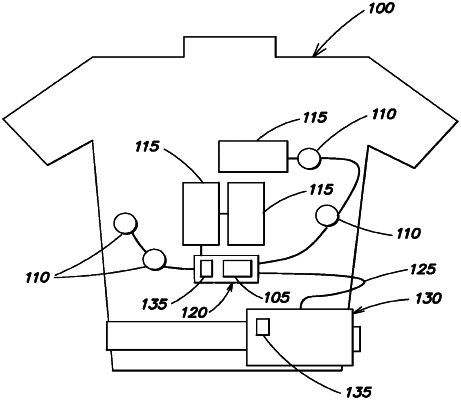| CPC A61B 5/02055 (2013.01) [A61B 5/11 (2013.01); A61B 5/1112 (2013.01); A61B 5/1117 (2013.01); A61B 5/4818 (2013.01); A61B 5/6804 (2013.01); A61B 5/6805 (2013.01); A61N 1/0484 (2013.01); A61N 1/36585 (2013.01); A61N 1/37258 (2013.01); A61N 1/39 (2013.01); A61N 1/3904 (2017.08); A61N 1/3987 (2013.01); A61N 1/3993 (2013.01); G16H 40/63 (2018.01); G16H 50/20 (2018.01); A61B 5/021 (2013.01); A61B 5/02438 (2013.01); A61B 5/0816 (2013.01); A61B 5/1455 (2013.01); A61B 5/282 (2021.01); A61B 5/721 (2013.01); A61B 2560/045 (2013.01); A61B 2562/0219 (2013.01); A61N 1/36535 (2013.01); A61N 1/36542 (2013.01); A61N 1/37247 (2013.01)] | 42 Claims |

|
1. A wearable defibrillator for use in monitoring patient movement and cardiac activity and treating a patient, comprising:
a garment configured to be worn by the patient;
treatment electrodes configured to apply an electric current to the patient as part of a defibrillation or pacing treatment;
an alarm module configured to provide audio, visual, and haptic notifications, the notifications configured to
indicate that an electric current will be administered imminently to the patient on detection of an arrhythmia condition, and
prompt the patient to provide a response input;
a motion sensor configured to detect motion and body position of the patient, and
a controller in electrical communication with the alarm module and the motion sensor, the controller configured to
monitor for the response input from the patient after the prompt to the patient,
determine, based on the detected motion and body position of the patient, whether the patient is sleeping, and
cause a change in one or more characteristics of the prompt to the patient on determining that the patient is sleeping.
|